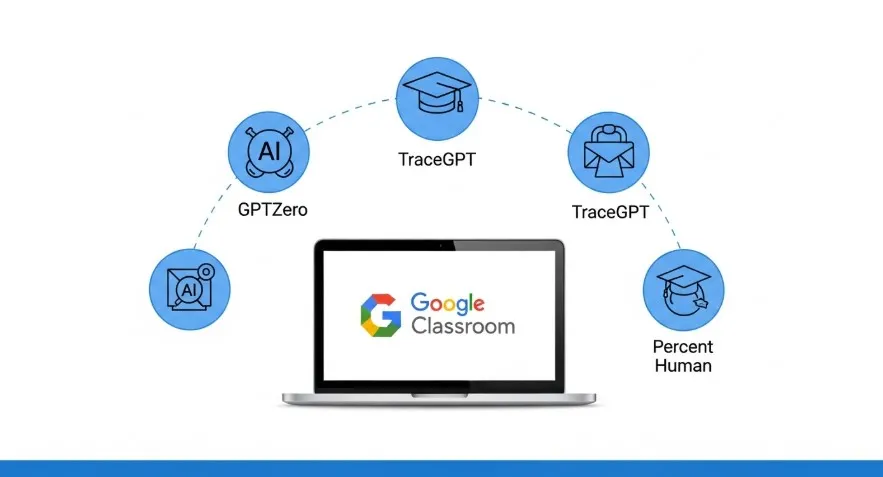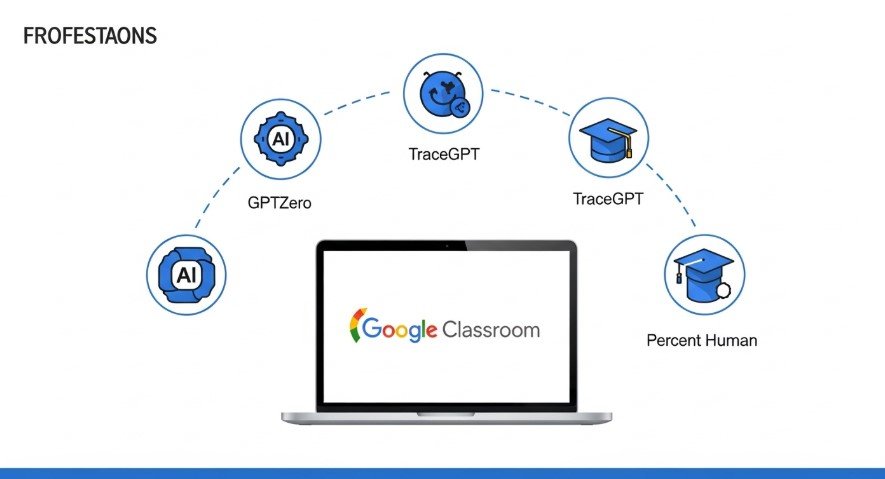In today’s classrooms, AI tools like ChatGPT are changing how students complete assignments. Many educators and students wonder: Can Google Classroom detect ChatGPT? This article answers that question, covering Google Classroom’s capabilities, third-party detection tools, manual methods, and the role of AI in education. Written in clear, simple language, this guide provides practical insights for teachers and students.
What Is Google Classroom?
Google Classroom is a free platform that helps teachers manage assignments, share resources, and communicate with students. It’s widely used in schools to streamline learning. One of its key features is Originality Reports, which checks student work for plagiarism by comparing it to web content and books. However, this tool is not designed to detect AI-generated text, like content from ChatGPT.
For more on Google Classroom’s features, check Google’s Classroom Help.
Does Google Classroom Detect ChatGPT?
No, Google Classroom does not have a built-in feature to detect ChatGPT or other AI-generated content. Originality Reports focus on plagiarism, not AI text. Since ChatGPT creates original content that doesn’t match existing sources, it passes these checks. This limitation has led educators to seek other ways to identify AI use.
Third-Party Tools for AI Detection
To address this gap, teachers can use third-party tools that detect AI-generated text. These tools analyze writing patterns and can integrate with Google Classroom. Here are the top options:
- GPTZero: Detects AI text at the sentence, paragraph, and document levels. It’s used by over 10 million users and integrates with Google Classroom. Visit GPTZero.me for details.
- TraceGPT by PlagiarismCheck.org: Uses stylometry to measure AI involvement and highlights AI-generated sentences. It works with Google Classroom and other platforms. Learn more at PlagiarismCheck.org.
- Percent Human: A Chrome extension that flags AI content in Google Docs and Classroom. It’s simple and effective for real-time checks.
These tools help teachers maintain academic fairness by identifying AI use that Google Classroom cannot detect.
| Tool | Key Features | Integration with Google Classroom | Source |
|---|---|---|---|
| GPTZero | Sentence and document-level AI detection | Yes | |
| TraceGPT | Stylometry analysis, highlights AI sentences | Yes | |
| Percent Human | Chrome extension for Google Docs and Classroom | Yes |

Manual Ways to Spot AI Use
Teachers can also use manual methods to detect AI-generated content. One effective approach is checking Google Docs version history. If a student pastes a large block of text at once, it may suggest AI use. To do this:
- Open the student’s Google Doc via Google Classroom.
- Click “File” and select “Version history.”
- Review the timeline for sudden text additions.
Other signs include:
- Writing Style Changes: AI text may use formal or generic language that differs from a student’s usual style.
- Unusual Content: If a student submits work far beyond their typical skill level, it could indicate AI involvement.
These methods, while time-consuming, can support third-party tools. For a step-by-step guide, see East Central University’s Faculty Resources.
Why AI Detection Matters
AI tools like ChatGPT are becoming common in education. A 2025 Turnitin survey found that 11% of student papers contained at least 20% AI-generated text. This trend, sometimes called “AI-giarism,” challenges academic integrity. Without proper detection, students may rely on AI instead of developing critical thinking skills.
Schools are responding by adopting AI detection tools and rethinking assignments. For example, tasks requiring personal reflection or in-class work are harder for AI to mimic.
Google’s Role in AI Detection
While Google Classroom lacks AI detection, Google uses machine learning to identify AI content across its platforms, like spam or bot comments. These algorithms analyze syntax, coherence, and patterns but aren’t part of Classroom’s toolkit. Google is also exploring AI for education, with tools like Gemini, which may lead to future detection features. For now, teachers rely on external solutions. Visit Google for Education for updates.edtechrce.org
Tips for Responsible AI Use
Students can use AI ethically to support learning. Here’s how:
- Use AI as a Study Aid: Generate ideas or outlines, then write in your own words.
- Rewrite AI Text: Paraphrase AI content to make it unique and avoid detection.
- Check School Policies: Some schools allow AI for specific tasks, while others ban it.
Teachers can encourage ethical AI use by:
- Setting clear guidelines on AI in assignments.
- Using detection tools to monitor submissions.
- Designing tasks that require original thinking.
For more on ethical AI use, read our post on How to Humanize ChatGPT Content.
FAQs
Can teachers tell if I used ChatGPT?
Teachers may notice AI use through writing style changes or tools like GPTZero. Manual checks, like Google Docs version history, also help.
How accurate are AI detection tools?
Tools like GPTZero and TraceGPT are 85-95% accurate but can have false positives. Combining them with manual review improves results.undetectable.ai
Can Google Classroom’s Originality Reports catch AI text?
No, they only detect plagiarism, not AI-generated content.
How can students avoid AI detection?
Use AI for brainstorming, rewrite text in your own words, and follow school rules to stay safe.
What’s the best way to use AI in school?
Use AI to support learning, like generating ideas or feedback, but always submit original work.
Conclusion
Google Classroom cannot detect ChatGPT on its own, but teachers have tools and methods to spot AI use. Third-party solutions like GPTZero and TraceGPT, along with manual checks, help maintain academic fairness. As AI grows in education, students and teachers must use it responsibly. Stay informed and check your school’s AI policies.
For related topics, explore:
